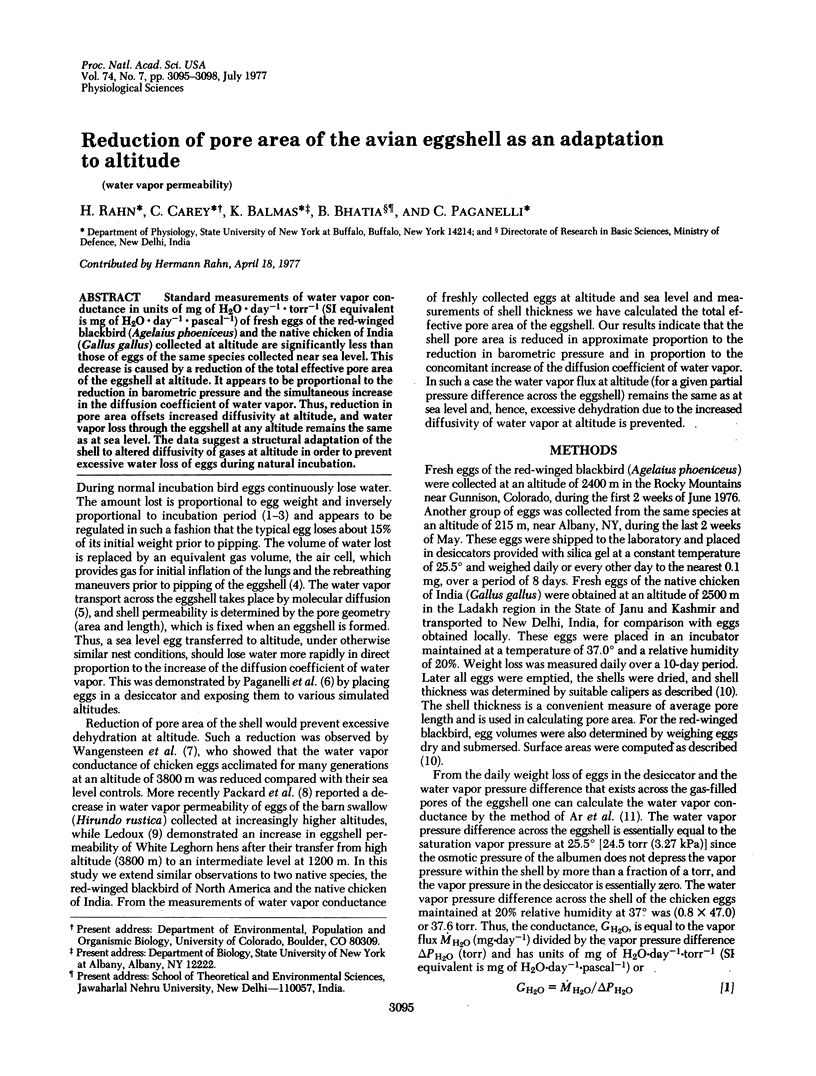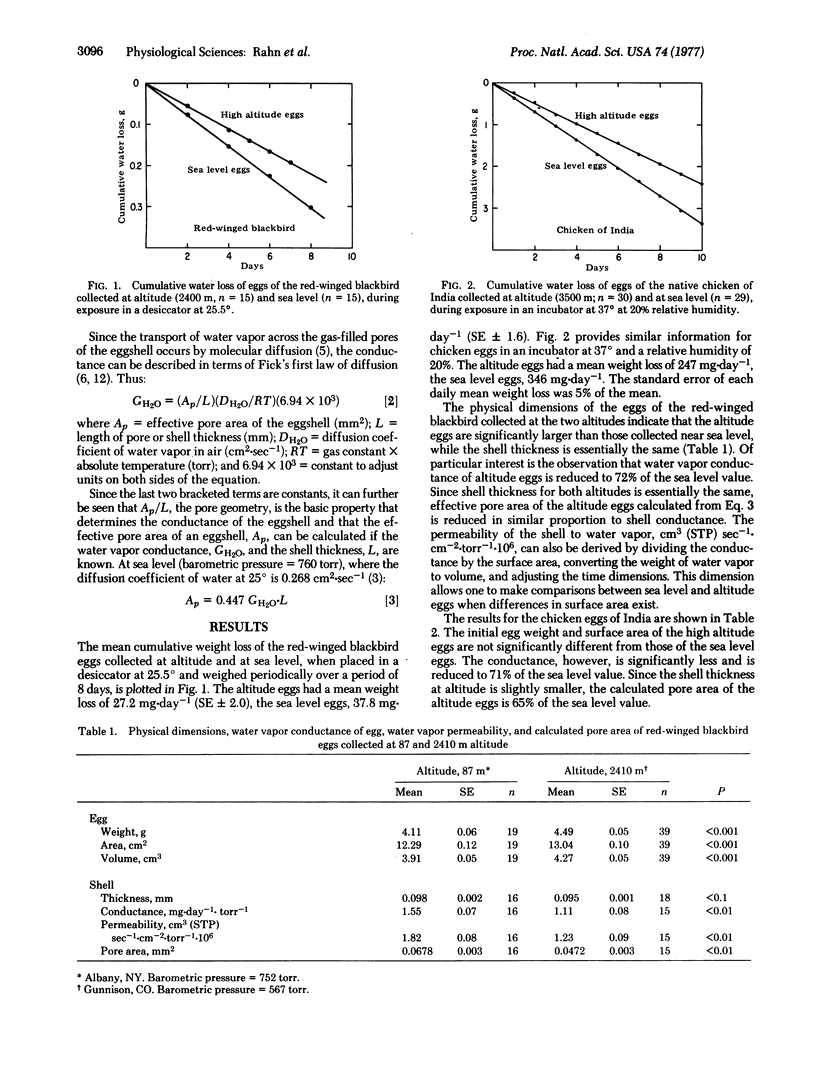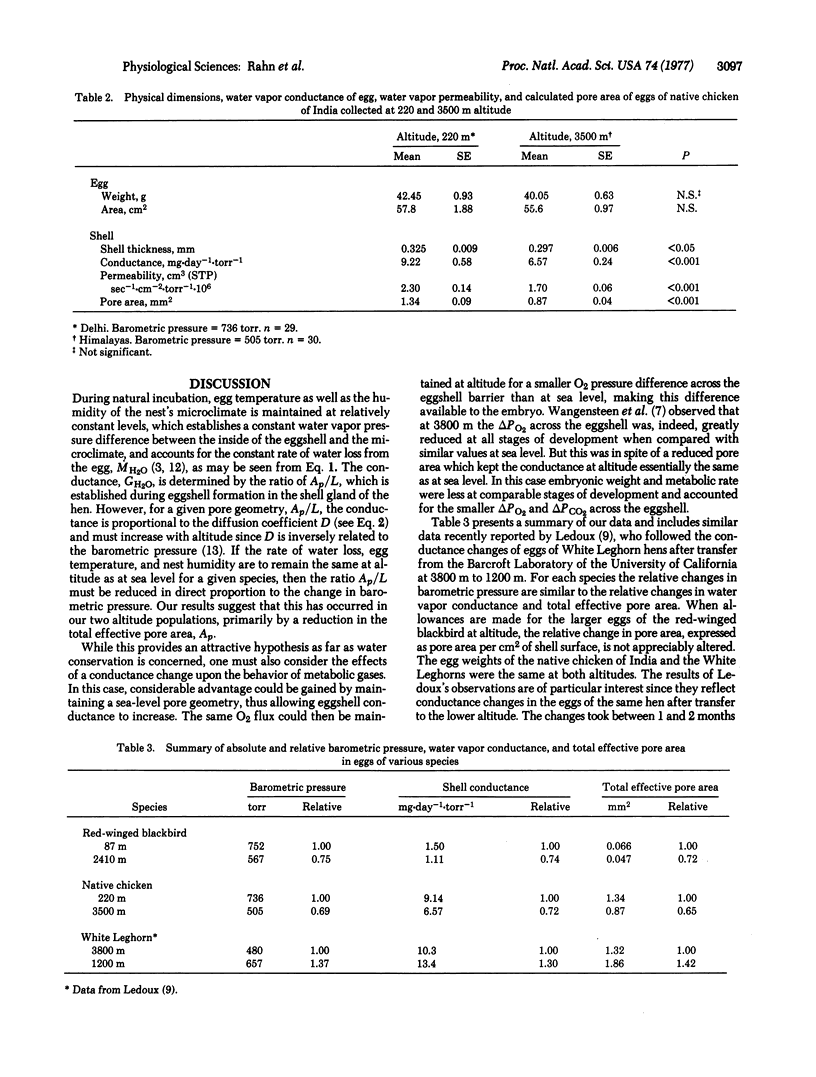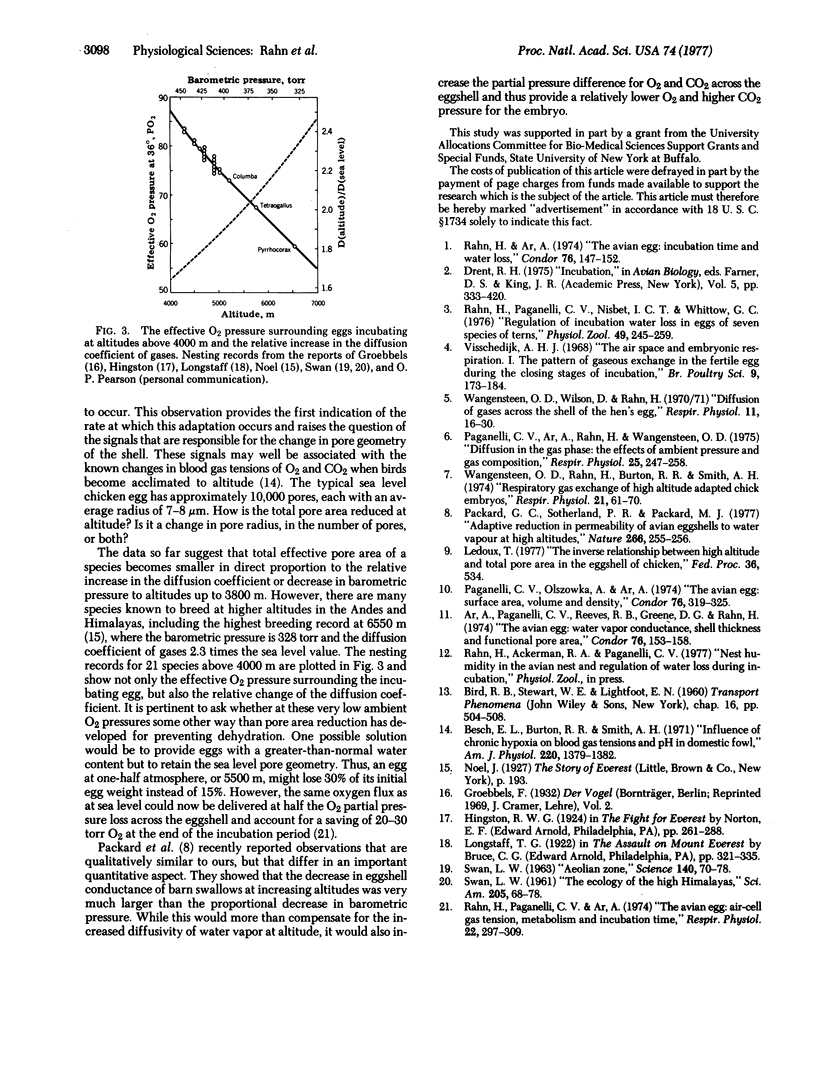Abstract
Standard measurements of water vapor conductance in units of mg of H2O · day-1 · torr-1 (SI equivalent is mg of H2O · day-1 · pascal-1) of fresh eggs of the red-winged blackbird (Agelaius phoeniceus) and the native chicken of India (Gallus gallus) collected at altitude are significantly less than those of eggs of the same species collected near sea level. This decrease is caused by a reduction of the total effective pore area of the eggshell at altitude. It appears to be proportional to the reduction in barometric pressure and the simultaneous increase in the diffusion coefficient of water vapor. Thus, reduction in pore area offsets increased diffusivity at altitude, and water vapor loss through the eggshell at any altitude remains the same as at sea level. The data suggest a structural adaptation of the shell to altered diffusivity of gases at altitude in order to prevent excessive water loss of eggs during natural incubation.
Keywords: water vapor permeability
Full text
PDF



Selected References
These references are in PubMed. This may not be the complete list of references from this article.
- Besch E. L., Burton R. R., Smith A. H. Influence of chronic hypoxia on blood gas tensions and pH in domestic fowl. Am J Physiol. 1971 May;220(5):1379–1382. doi: 10.1152/ajplegacy.1971.220.5.1379. [DOI] [PubMed] [Google Scholar]
- Packard G. C., Sotherland P. R., Packard M. J. Adaptive reduction in permeability of avian eggshells to water vapour at high altitudes. Nature. 1977 Mar 17;266(5599):255–256. doi: 10.1038/266255a0. [DOI] [PubMed] [Google Scholar]
- Paganelli C. V., Rahn A. A., Wangensteen O. D. Diffusion in the gas phase: the effects of ambient pressure and gas composition. Respir Physiol. 1975 Dec;25(3):247–258. doi: 10.1016/0034-5687(75)90001-8. [DOI] [PubMed] [Google Scholar]
- Rahn H., Paganelli C. V., Ar A. The avian egg: air-cell gas tension, metabolism and incubation time. Respir Physiol. 1974 Dec;22(3):297–309. doi: 10.1016/0034-5687(74)90079-6. [DOI] [PubMed] [Google Scholar]
- Swan L. W. Aeolian Zone. Science. 1963 Apr 5;140(3562):77–78. doi: 10.1126/science.140.3562.77. [DOI] [PubMed] [Google Scholar]
- Visschedijk A. H. The air space and embryonic respiration. I. The pattern of gaseous exchange in the fertile egg during the closing stages of incubation. Br Poult Sci. 1968 Apr;9(2):173–184. doi: 10.1080/00071666808415707. [DOI] [PubMed] [Google Scholar]
- Wangensteen O. D., Rahn H., Burton R. R., Smith A. H. Respiratory gas exchange of high altitude adapted chick embryos. Respir Physiol. 1974 Jul;21(1):61–70. doi: 10.1016/0034-5687(74)90007-3. [DOI] [PubMed] [Google Scholar]
- Wangensteen O. D., Wilson D., Rahn H. Diffusion of gases across the shell of the hen's egg. Respir Physiol. 1970;11(1):16–30. doi: 10.1016/0034-5687(70)90099-x. [DOI] [PubMed] [Google Scholar]


